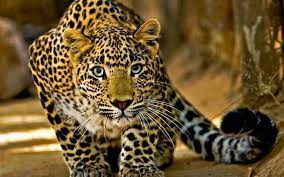By Zhu Sixiong, Meng Haiying
Wild Siberian tigers have been frequently spotted in the forests in the east of northeast China’s Jilin province over recent years. The frequent appearance of the predator at the top of the food chain mirrors China’s improving ecosystem.
For a long time, Jilin province has been taking huge efforts to protect the authenticity and integrity of its natural ecosystem, including Siberian tigers, Amur leopards and other wildlife, so as to preserve the biodiversity and natural ecology in the area.
In 2017, the pilot system of the Northeast China Tiger and Leopard National Park was officially launched. Four years later, the park was listed as one of the first five national parks in China.
Spanning Jilin and its neighboring Heilongjiang province, the national park covers an area of 14,100 square kilometers, with forest coverage of 97.74 percent. It is the only stable habitat and source of wild Siberian tigers and Amur leopards in China
Over the years, Jilin province has thrown in a great deal of manpower and material resources to restore and maintain the forest ecology. It has prohibited commercial logging of all natural forests and shut down mining enterprises in forests to provide a free habitat for Siberian tigers and Amur leopards.
Economic interests give way to the protection of ecology and wild animals. Under the suggestion of associate professor Feng Limin and his research team from the College of Life Science, Beijing Normal University, Jilin province even canceled an expressway project and rerouted a high-speed railway in 2015. The ways could traverse the big cats’ habitat and disturb their migration once completed as originally planned.
According to statistics, since the pilot system of the Northeast China Tiger and Leopard National Park was launched, 400 hectares of climax forestry communities have been restored or cultivated and 2,000 hectares of Korean pines have been planted. Three wildlife passages have been built.
Jilin province has also returned 2,243.21 hectares of forests and restored 620.91 hectares of ecology at mining sites.
A qualified national park requires not only a sound ecological environment, but also advanced monitoring methods and protection practices.
Feng and his team have established an integrated monitoring system for the Northeast China Tiger and Leopard National Park, which includes nearly 30,000 infrared cameras and employs modern communication, cloud computing, artificial intelligence and big data technologies.
The system is able to capture real-time images and footage of wildlife and acquire information about biodiversity, ecological elements and human activities. Over 6,800 rangers are on patrol missions in the park to record GPS waypoints and video data and protect the safety of wild animals with the help of the system.
Huge changes had taken place in the park between 2017 and 2021. The quality of the park’s ecosystem was further enhanced, while grazing and other human disturbance were on a decline. A rapid increase was recorded in the number of herbivore animals, such as sika deer, which helped recover the food chain.
In the past, only 33 percent of the Siberian tiger cubs in the park could grow into adulthood, while the figure has surged to over 50 percent today. Stable activities of Siberian tigers and Amur leopards are recorded now in over half of the areas in the park, and Siberian tigers are seen on almost every mountain in Huichun, a core zone of the national park.
It was predicted 10 years ago that wild Siberian tigers might become extinct in China. However, according to monitoring data, as of the end of 2021, the numbers of wild Siberian tigers and Amur leopards in the park had increased to 50 and 60 respectively from 27 and 42 in 2017. Over 10 tiger cubs and 7 leopard cubs were spotted.
“From now on and till 2025, we will integrate nature reserves and state-owned forest farms, launch habitat restoration programs, and build ecological corridors for Siberian tigers and Amur leopards, so as to enhance the suitability and connectivity of the habitats for the big cats and strive for steady reproduction of them,” said an employee with the Northeast China Tiger and Leopard National Park.













